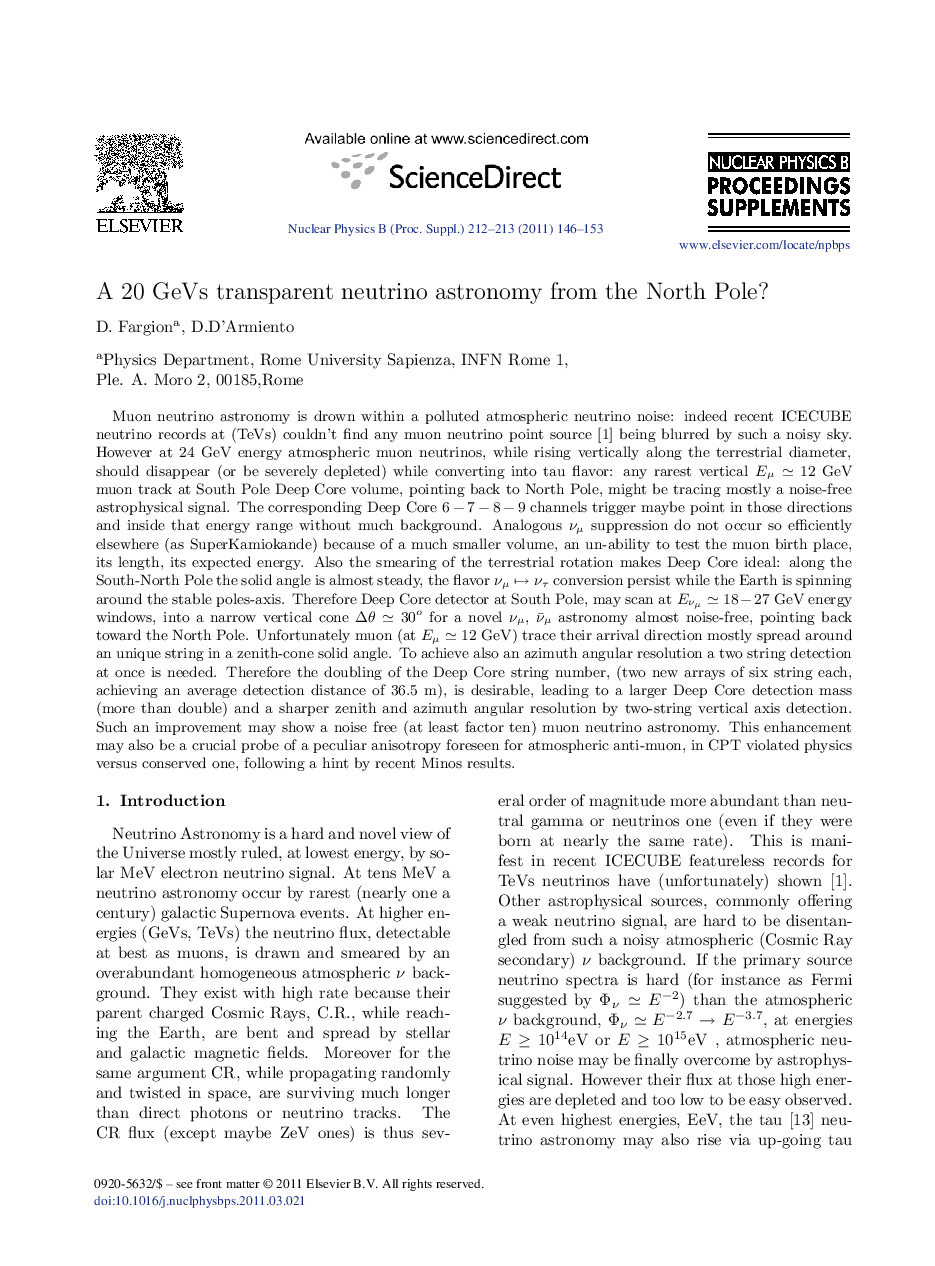| Article ID | Journal | Published Year | Pages | File Type |
|---|---|---|---|---|
| 1849005 | Nuclear Physics B - Proceedings Supplements | 2011 | 8 Pages |
Muon neutrino astronomy is drown within a polluted atmospheric neutrino noise: indeed recent ICECUBE neutrino records at (TeVs) couldnʼt find any muon neutrino point source [R. Abbasi et al. (IceCube Collaboration), arXiv:1010.3980v1] being blurred by such a noisy sky. However at 24 GeV energy atmospheric muon neutrinos, while rising vertically along the terrestrial diameter, should disappear (or be severely depleted) while converting into tau flavor: any rarest vertical Eμ≃12GeV muon track at South Pole Deep Core volume, pointing back to North Pole, might be tracing mostly a noise-free astrophysical signal. The corresponding Deep Core 6 – 7 – 8 – 9 channels trigger maybe point in those directions and inside that energy range without much background. Analogous νμ suppression do not occur so efficiently elsewhere (as SuperKamiokande) because of a much smaller volume, an un-ability to test the muon birth place, its length, its expected energy. Also the smearing of the terrestrial rotation makes Deep Core ideal: along the South-North Pole the solid angle is almost steady, the flavor νμ↦ντ conversion persist while the Earth is spinning around the stable poles-axis. Therefore Deep Core detector at South Pole, may scan at Eνμ≃18−27GeV energy windows, into a narrow vertical cone Δθ≃30° for a novel νμ, astronomy almost noise-free, pointing back toward the North Pole. Unfortunately muon (at Eμ≃12GeV) trace their arrival direction mostly spread around an unique string in a zenith-cone solid angle. To achieve also an azimuth angular resolution a two string detection at once is needed. Therefore the doubling of the Deep Core string number, (two new arrays of six string each, achieving an average detection distance of 36.5 m), is desirable, leading to a larger Deep Core detection mass (more than double) and a sharper zenith and azimuth angular resolution by two-string vertical axis detection. Such an improvement may show a noise free (at least factor ten) muon neutrino astronomy. This enhancement may also be a crucial probe of a peculiar anisotropy foreseen for atmospheric anti-muon, in CPT violated physics versus conserved one, following a hint by recent Minos results.
